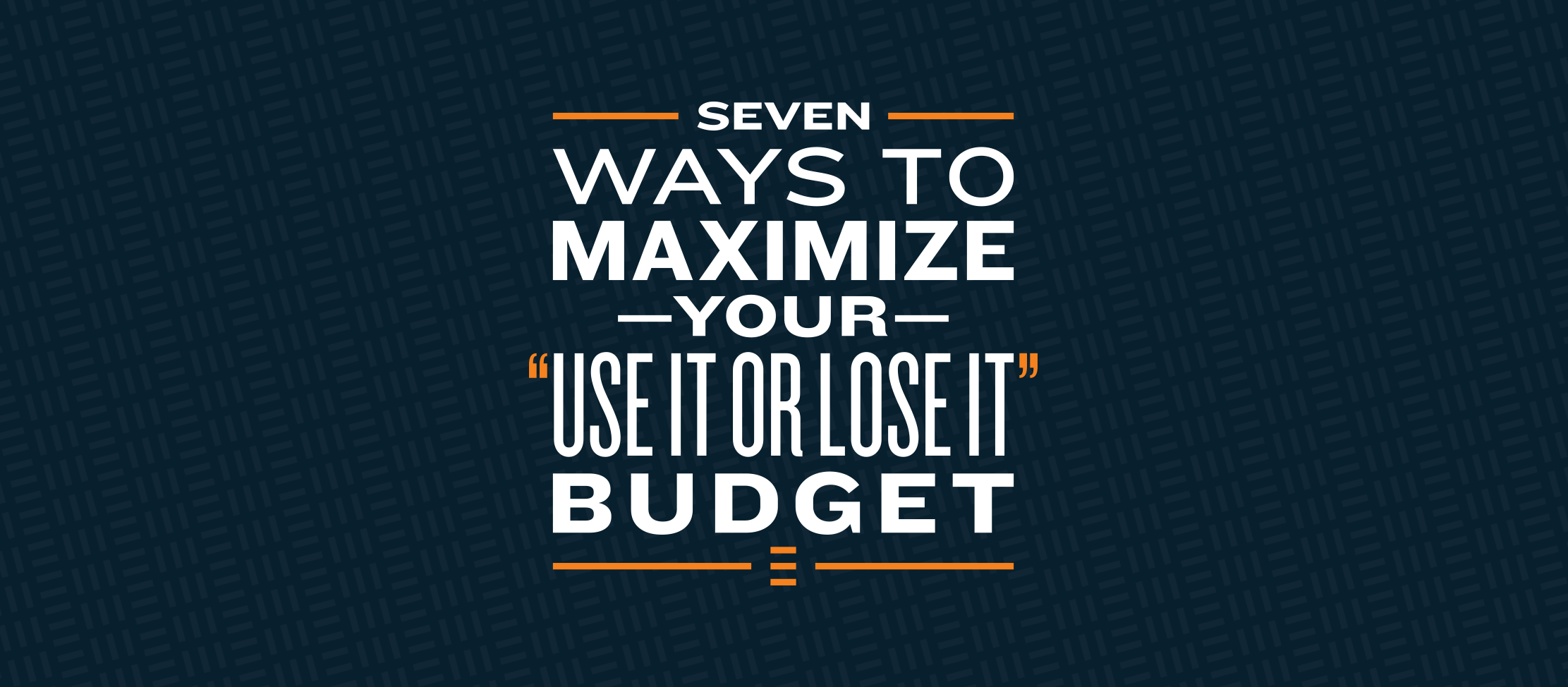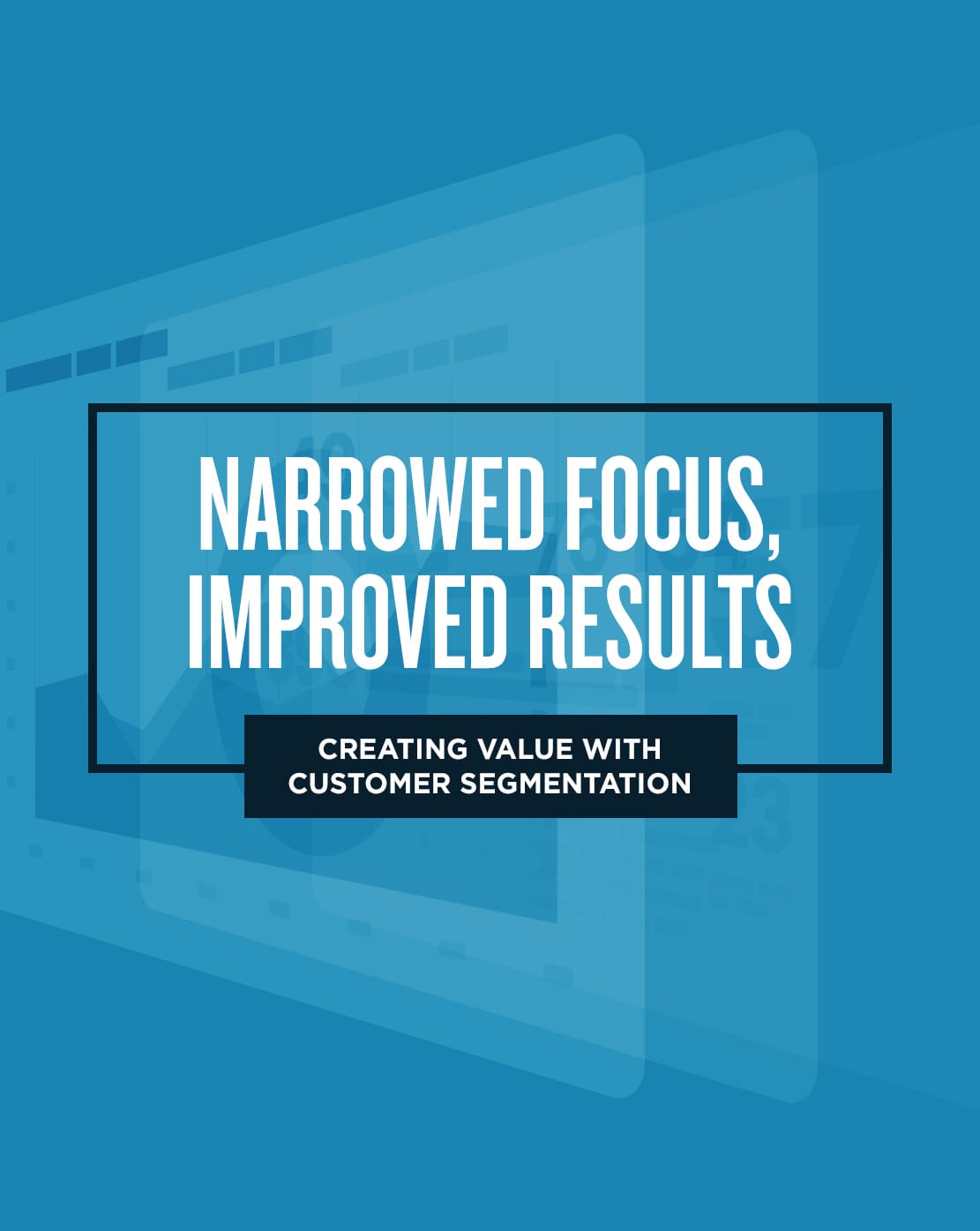
Seven Ways To Maximize Your “Use It Or Lose It” Budget
Most of the time it seems like we are all scrambling to stretch our marketing budgets and really make them work. As a result, as the end of the year draws near, there’s often a discovery of untapped dollars and that surplus puts you in a “use it or lose it” position. On top of that, we’re all getting pretty good at the dance that forces us to hit pause and reassess goals and priorities. This year is sure to be no different.
Here’s the thing: we’re still in a pandemic that is slowly shifting to endemic status. Resources and supply chains have affected production lines and product development. In some cases, the industry might not be able to keep up with customer demand. In others, the industry might not be able to meet it at all. So what do you do with that remaining marketing budget and how does it play into your goals?
Broad sweep here, but common marketing goals generally tend to fall into one of two categories:
- Increasing Brand Awareness—growing audience, increasing engagement—get more content shares, downloads, etc., and get people talking
- Increasing Sales—lead gen, higher conversions, increasing average sales size, and customer retention
But what if you are faced with a resource or supply chain issue? What if you’re no longer confident of your marketplace positioning due to all of the variables we’ve faced over the last couple of years? Maybe you need to pull back on driving sales because of production issues but you can’t go dark as a brand—it just means a shift in your goals and tactics. If you’re questioning where to start, the first thing to remember is that found budget equals opportunity. Opportunity to get ahead and set yourself apart from your competitors and in position for a successful year to come.
Found budget equals opportunity.
Below are some strategic ways to maximize an unplanned, end-of-year spend and set yourself up for success in 2023.
1. Do your research
Data is king, but are you armed with the insights to make it a powerful tool? You might have all of the back-end analytics in the world, but what does it all really mean and how should you leverage it?
Year-end can be a great time to conduct fresh research. When was the last time you really looked at where you fit in the marketplace? How do you measure up to and perform in relation to your competitors and the industry as a whole? How have the last 2+ years of a global pandemic affected your business and your customers? There are so many questions … the key is determining what has to shift in your approach and messaging.
2. Experiment with digital ads + social media
We hear it and say it all of the time: “There is no one-size-fits-all solution” for anything. Consumers, technology, and marketing all change every day. Regardless of your marketing strategy, understanding your audience is a critical component of that. The days of “set it and forget it” are over. For content to matter, it needs to be relevant. If you want to expand your audience, you need to expand your content. It’s essential that content stays fresh and that means it should be a never-ending process. If your online presence is dynamic rather than the same-old-same-old, you’re more likely to build a loyal audience and increase lead generation. So run experiments with your digital advertising and social media. Now is a great time to evaluate different audience targeting and frequency, as well as how you might optimize things.
- Create a short video, slideshow or digital lookbook
- Change your target audience and personas. Try different age groups, interests, behaviors, etc.
- Target a new geo-location
- Try advertising on a new platform
- Run more A/B tests and find out what really works best for your brand
- Target different keywords on your Google Ads and assess the CTR or CPC metrics
I read an article by Harvard Business Review a while back that stayed with me. In short it said: “Experimentation is a continuous iterative process that is never completed and that shapes other internal processes. To reap its full benefits, you need to view it not as a tactical task but a strategic pillar of decision-making and ideation.” So start now and make experimenting part of your plan going forward.
3. Lights, camera, action
Video, video, video. If it’s not already, video should be an essential part of your content strategy. Video is affordable, targeted, and allows for advanced analytics. Engaging story-driven videos will bring you results: 93% of businesses gain a new customer as the result of posting a video on social media and 88% of people say that they’ve been convinced to buy a product or service by watching a brand’s video. 90% of viewers said that they wanted to see more videos from brands and businesses. On top of it all people are twice as likely to share video content with their friends than any other type of content, including social media posts, blog posts/articles and product pages.
What we are seeing now is that consumers would rather learn about a product or service by way of video. In fact, 84% of people say they’ve been convinced to buy a product or service by watching a brand’s video.
Edutainment works. Customers gain trust in brands, and they’re able to educate themselves about a company or a product through interactive visuals.
The increase in popularity can be tied directly not only to the shift in how we are consuming information today but also the ease and quality of education that video brings; we marketers love to call it “edutainment.” Edutainment works. Not only do customers gain trust in brands, but they’re also able to educate themselves about a company or a product through interactive visuals.
Don’t limit your thinking on video to only traditional brand or product pieces. Think about all of the possibilities: animation, demonstrations, event capture, live action, social, teasers, testimonials, and more.
4. Virtual is here to stay
The virtual world is here to stay, be it as a stand alone or hybrid experience. The pandemic has forced everyone to reassess communication channels. When done right, online product launches, training, and conferences, and other events can be less expensive and remain effective in surprising ways. Hybrid events present the opportunity to offer the best of both physical and virtual perks while allowing you to expand your audience and be more inclusive.
According to a poll conducted by vFairs, 72% of individuals said they would prefer either hybrid or exclusively virtual events. Only 28% said they would prefer live events. So people are still leaning towards virtual and hybrid events. Don’t forget that virtual events can be streamed live, viewed on-demand, or released as podcasts and other online formats—all while giving you some pretty powerful real-time analytics. Whether the purpose is entertainment or engagement, the possibilities are endless.
Although moving to a virtual space can provide a scalable and cost-effective solution, you also need to provide creative and customized engagements that allow you to stay connected and relevant to your audience. There’s no question that we’ll continue to see the rise of digital activations playing a big role in real-life immersive experiences. There are expectations for higher production values today versus where we were two years ago. Don’t let your virtual experience ever feel like just another meeting. The focus should be on the experience first and foremost—let the content drive the tools you will need.
5. Freshen up your web presence
When was the last time you dug into the web analytics on your site or refreshed your SEO? I mentioned it earlier but it’s worth repeating: for content to matter, it needs to be relevant.
You may have made changes and updates throughout the year, but how do you know you made the right decisions if you’re not analyzing the impacts? Year-end is a great time to evaluate. Your website is your largest marketing tool; don’t leave it unattended.
- How is the site performing?
- Is the site optimized the right way and really working for you?
- Who is the audience and are you taking them on the right journey?
- Have you done an SEO evaluation?
Make this part of your annual plan. You will find ways to improve the user experience for your customers and it will help determine content relevance. You may decide to simplify your navigation and wayfinding. Or you could invest in refreshing content by culling or updating blogs, adding testimonials, case studies, or even better—adding video content to your site. As noted earlier, fresh content is key and should be part of a never-ending process in your marketing strategy. It will help drive SEO, improve engagement and increase the relevancy of your brand.
6. Build trust and get ’em talking!
Influencer marketing has become one of the most popular and effective forms of online marketing. It’s not going away any time soon—it should not be considered a fad. It’s real and it’s powerful; it builds trust and attracts qualified leads.
A recent Statista report stated the global influencer marketing market size has more than doubled since 2019. In 2022, the market was valued at a record 16.4 billion U.S. dollars and it’s only projected to keep growing. The Influencer Marketing Hub attributes this growth to the increasing popularity of short video formats on platforms like TikTok, Facebook, and YouTube along with effect of a global pandemic on consumers.
Whether you want to raise brand awareness, reach new audiences, improve brand advocacy or increase your sales conversions—influencer marketing should be part of the mix It’s important to note that an influencer doesn’t have to be a celebrity—not that there’s anything wrong with that. It’s just that anyone that has an audience or following also has the ability to affect a purchase, and micro-influencers often have just as big of an impact as those with larger followings due to their highly engaged and loyal communities.
Explore some relationships with influencers in your industry. But bear in mind, it needs to be genuine—not overproduced or too corporate—to be persuasive. Don’t be afraid to experiment with this one.
7. It’s great to automate
Take a moment to think about how your marketing campaigns are executed. Any gaps or pain points? Were there challenges keeping track of multiple projects and initiatives, or issues targeting the right customer with the right messages across multiple platforms? Consider investing your remaining budget in a marketing productivity or project management platform that will help your future marketing run smoother. We really like SharpSpring but other options include Salesforce, Marketo, and Hubspot.
You’ll be amazed by what marketing automation can do for your business by managing marketing processes and multifunctional campaigns, across multiple channels, automatically. If you already use a marketing automation platform, now is a great time to refresh.

I know this has been a lot. But you have friends at EPIC who can help. Reach out to your account manager or here for assistance with ideas or execution.
BONUS IDEA: Start a podcast—launch a series that will bring entertainment and value to your audience (edutainment!)
Recommended







